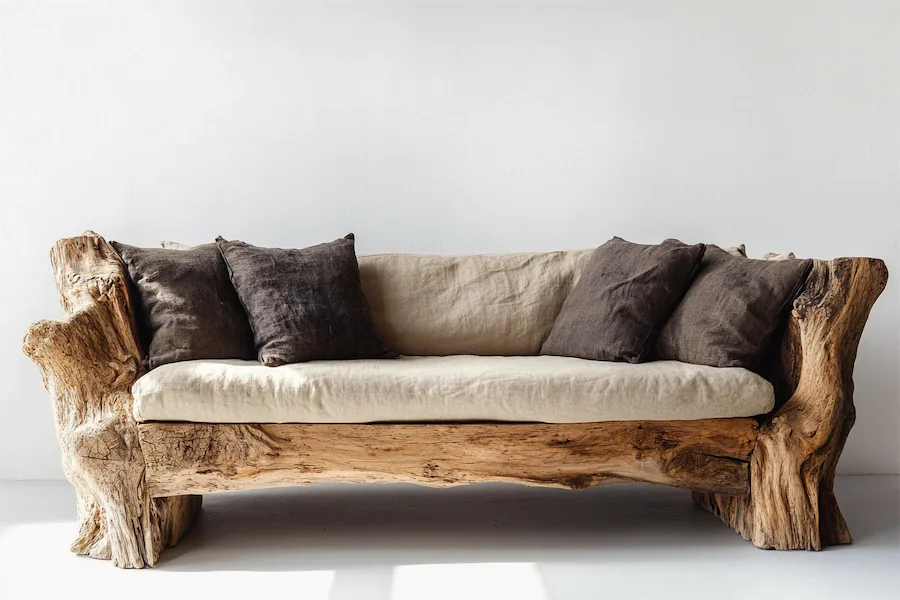A rustic sofa embodies the charm and simplicity of rural living, emphasizing natural materials, sturdy construction, and a warm, inviting aesthetic.
History and Origins of Rustic Sofas
Rustic furniture design finds its roots in the early days of human civilization, where functionality and durability were paramount. Early settlers crafted furniture from locally sourced materials, such as wood, stone, and metal, focusing on practicality to withstand daily life. This approach led to the creation of robust, handcrafted pieces that emphasized the beauty of raw materials.
In the 18th and 19th centuries, rustic furniture gained prominence in Europe and North America, particularly in rural areas and frontier settlements. The Adirondack style, for example, emerged in the northeastern United States, characterized by the use of sticks and logs to create functional yet aesthetically pleasing furniture.
Key Features of Rustic Sofas
- Natural Materials: Constructed from solid woods like oak, pine, or cedar, often showcasing the natural grain and imperfections of the timber. Leather and natural fibers are also commonly used for upholstery.
- Handcrafted Details: Emphasis on artisanal craftsmanship, with visible joinery, hand-carved elements, and a lack of mass-produced components.
- Earthy Color Palette: Utilization of warm, neutral tones such as browns, beiges, and greens that reflect the natural environment.
- Robust Construction: Built for durability and longevity, often featuring thick frames and substantial proportions.
- Distressed Finishes: Incorporation of weathered or aged finishes to evoke a sense of history and timelessness.
Applications of Rustic Sofas
- Living Rooms: Serve as a focal point in rustic or country-style living spaces, providing comfort and a sense of coziness.
- Cabins and Lodges: Ideal for vacation homes or retreats that embrace a natural, outdoorsy aesthetic.
- Commercial Spaces: Utilized in establishments like rustic-themed restaurants or boutique hotels to enhance the ambiance.
Considerations When Choosing a Rustic Sofa
- Space and Proportions: Ensure the sofa’s dimensions align with your room size, as rustic sofas can be substantial and may dominate smaller spaces.
- Material Quality: Select high-quality, durable materials that can withstand daily use and maintain their appearance over time.
- Comfort Level: Prioritize sofas with supportive cushioning and ergonomic design to enhance comfort for all users.
- Aesthetic Compatibility: Choose a sofa that complements your existing décor, paying attention to color schemes, textures, and overall style coherence.
Conclusion
Rustic sofas offer a timeless appeal that blends functionality with natural beauty. Their emphasis on quality materials and craftsmanship makes them a versatile choice for various interior settings, from traditional country homes to modern urban spaces seeking a touch of rustic charm.
